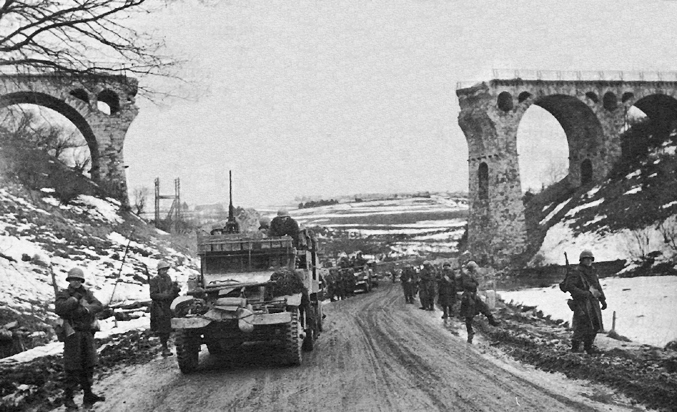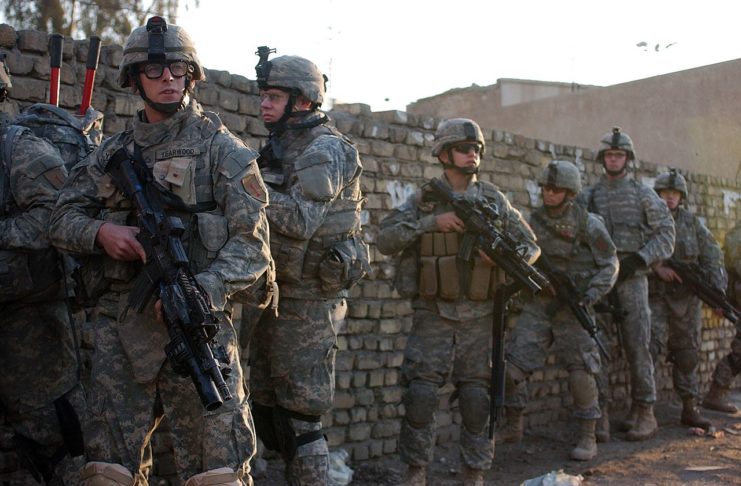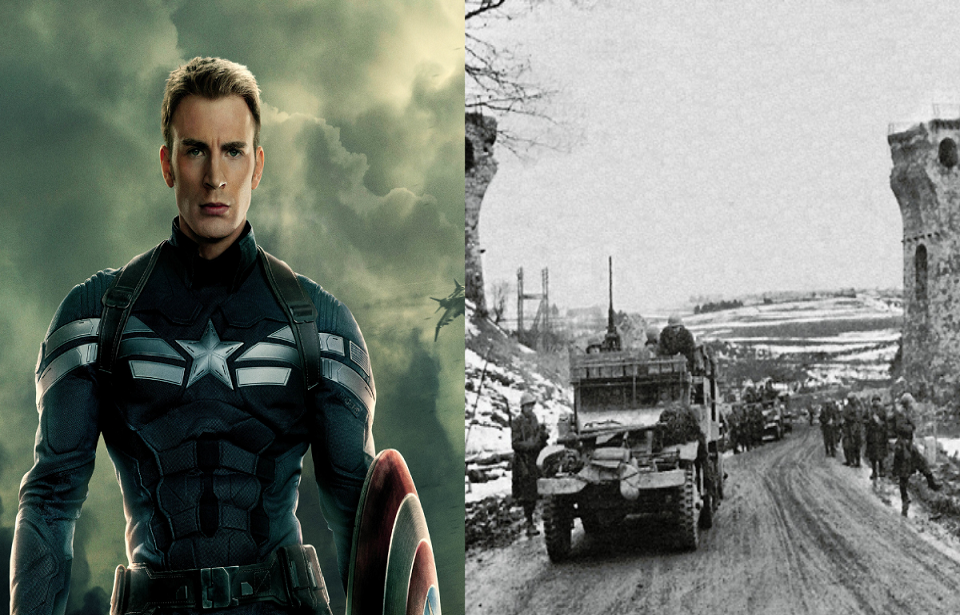In 1941 beloved superhero Captain America appeared in a Marvel comic book for the first time. Shown punching the Führer on his debut comic cover, Captain America started out as the humble Steve Rogers, a scrawny man who is too weak to fight in WWII. However, after he is amped up by a special serum, he becomes the perfect soldier. Rogers was then given the rank of Captain and assigned to the 1st Battalion, 26th Infantry Regiment, 1st Infantry Division.
While Captain America is a fictional character, his unit was not, and it’s still active today.
The 26th Infantry Regiment

The 26th Infantry Regiment was created in the early years of the 20th century to bolster the overextended US Army conducting operations in the Philippines, Cuba, and Puerto Rico. The 26th began its service in the Philippines and soon earned its first battle streamer. It would spend most of its existence before WWI in the Southwest Pacific, the Indian frontier, and the Mexican frontier.
When WWI came around the 26th Infantry Regiment was one of the only US Army units ready to be immediately sent overseas. They departed for France as the first American Expeditionary Division in June 1917. Later, the division would be renamed the First Division, which would famously become known as the Big Red One.
The Blue Spaders
The 26th Infantry Regiment’s unit insignia features a blue Indian arrowhead, which resembles a spade. As a result, the regiment earned the nickname “Blue Spaders.”
WWI
When the regiment reached France they were quickly sent to the frontlines, where they fought in vicious combat and received heavy losses. Over 900 Blue Spaders were lost in just six months.
At the Battle of Soissons the 26th started with 3,100 men but were left with just 1,500 at the battle’s conclusion. The regiment also lost its regimental commander, executive officer, regimental command sergeant major, and two of its three battalion commanders in the battle.
But the Blue Spaders fought heroically and were awarded more battle streamers than any other US regiment that participated in the war. When the war ended the 26th spent a short amount of time in Germany as an occupying force.
WWII
The 26th Infantry Regiment was once again readied for war after the Japanese attacked Pearl Harbor in December 1941. The Blue Spaders was assigned to the 1st Infantry Division and were extremely busy throughout the Second World War, participating in some of the conflict’s most famous battles.
To begin with, they fought in North Africa, leading the US’ first-ever amphibious assault. Following this, they fought at Kasserine Pass. In the summer of 1943, they invaded Sicily, and a year later landed on Omaha Beach during the D-Day invasion.
They captured the first German city at Aachen, fought through the Battle of the Bulge, and crossed the Rhine.
The Blue Spaders ended the war with seven battle streamers, five foreign awards, and a Presidential Unit Citation. They then spent more time in Germany as an occupying force for the second time. Germany would become like a second home for the regiment.
Vietnam
During the Vietnam War, the 26th Infantry Regiment was once again assigned to the 1st Infantry Division and deployed to Vietnam. They arrived in the country in 1965 as part of America’s first division-sized unit to reach Vietnam.
The Blue Spaders fought hard, earning eleven battle streamers, two foreign awards, and a Valorous Unit Award before being pulled out of the country in 1970. In total, they spent five years in the region.
The 26th were sent back to Germany after Vietnam.
Blue Spaders in the Balkans and modern-day

In 1996, nearly a century after the regiment was formed, the Blue Spaders were deployed to the Balkans and served in Bosnia, the Republic of Macedonia, and Kosovo, adding more awards to their impressive record.
In the early 2000s, the 26th were sent to Iraq as part of Operation Iraqi Freedom and then to Afghanistan for Operation Enduring Freedom.
More from us: Performed Every Mission – Guardsman Achieved Rank Of Colonel And Commanded Battalion In Iraq
It is no surprise that such a well-decorated and highly experienced unit was chosen to be to Captain America’s comrades. However, while in Marvel’s fictional universe the 26th was aided by a superhuman, the superhuman-like achievements of the real-life 26th were accomplished by ordinary men doing an extraordinary job.
